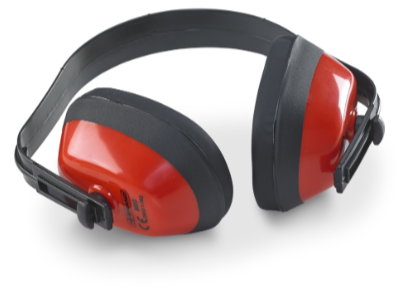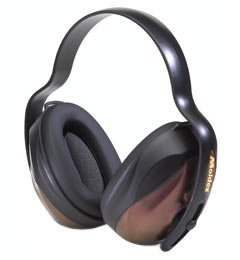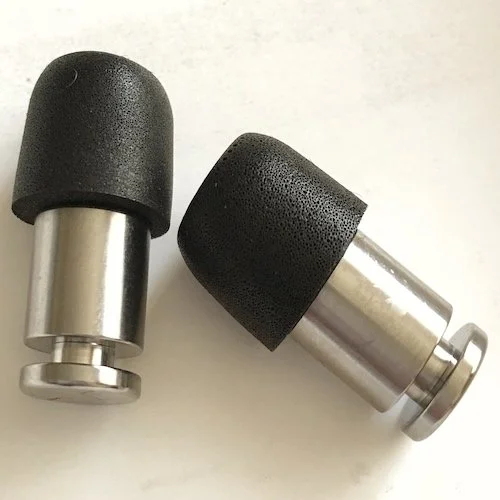Is the price of hearing protection linked to how good it is?
Hearing protection comes in a huge range of prices from a couple of quid for a pair of earmuffs to £30 or £40 or more, but does more expensive get you better protection?
What is ‘better’ in terms of hearing protection?
Firstly, to be clear on one element, 'better’ in terms of hearing protection is not synonymous with ‘stronger’ - more powerful hearing protection is not ‘better’ than a less powerful style. Almost no workplace needs the strongest hearing protection on the market, indeed the most common issue I see when doing noise assessments is hearing protection which is too strong for the noise.
Link: Problems with over-protection
So, ‘better’ doesn’t mean ‘stronger’.
The strongest hearing protection on the market has an SNR of 39 dB (SNR is the number of decibels of noise reduction it gives). At the 38 and 39 dB end of the scale all the hearing protection available are plugs, not a muff - another common misconception is that muffs are stronger than plugs, they aren’t. Those little squishy plugs can be the strongest hearing protection you can get.
At the lower end of the scale though, hearing protection reaches around 16 dB but again these are all plugs, no muffs are this low. Those foam plugs can be both the strongest and weakest hearing protection available, and everything between.
Comparing prices of stronger muffs against weaker ones
Looking at muffs in each end of the scale of how strong they are:
Towards the upper end in terms of how strong they are you will find the Portwest PS43 muff which sells for something around £11.50 and these knock about 36 dB off the noise, that’s a huge noise reduction.
At the other end of the noise-reduction scale, the Arco Premium Low Attenuating Defenders have an SNR of 24 dB and cost around £17.00. That is more money for considerably less noise reduction.
Spending more money doesn’t guarantee more protection but remember, ‘weaker’ is not ‘worse’, in most places it is actually far better. Those Arco muffs are good despite being weaker.
Comparing the same strength of muffs but at different prices
As the Portwest PW40
As the Beeswift BBED
Another common muff are the plain red ones you see here and there are a few reasons these muffs are so common to see in workplaces.
They are actually great for most noisy jobs in terms of how much noise reduction they give. They are not too strong, not too weak, just right.
They’re cheap which is always a draw.
This muff is rebranded a lot and sold under a lot of different names. Beeswift sell it as the BBED, Portwest sell it as the PW40, B&Q sell it with no branding at all, and myriad other websites sell it under their own fairly random naming, usually with nothing printed on the muff at all.
Some sell it for three or four quid, some sell it online for £12 or more but all are the same muff.
That red ear muff has an SNR of 28 dB and when sold as Portwest as the PW40 it costs around £3, not just cheap as chips, cheaper than chips!
For exactly the same level of protection you could also buy the Moldex M2 which has exactly the same SNR of 28 dB but this time costs around £12. Four times the money for exactly the same level of protection. But it does look pretty.
Moldex M2
So what are you buying and should you always go cheaper? Not necessarily, what you are paying for is the build quality. The cheapo red ones do a perfectly good job but won’t last as long and will need replacing while those Moldex ones will keep going until the time of the Second Coming.
Ear muffs don’t go on forever and need replacing
Ear muffs rely on things like good soft compliant cushions and a consistently strong and fairly tight headband in order for the seal around the ear to be good and to remain that way. Over time the cushions firm up and the headband gets loose, both of which mean the muff gives less protection than they did and they will need replacing at some point.
While it sounds better financially to have ear muffs which go on and on, I would throw one complication into the mix… If you have ear muffs which will last until mankind’s first Mars colony, how long is it though until people lose or otherwise damage the muffs? I would suspect that the human element drastically shortens the replacement cycle in a lot of workplaces.
That very much lessens some of the benefit of the more expensive types in that respect.
That said, I have tried many many types of ear muff over the years and personally settled on the 3M Optime II and the Honeywell VS110 as my go-to choice that I spend my own money on. They aren’t the cheapest at about £17 and £13 respectively but they are very comfy for all-day use and based on how well they are holding up seem to have an expiry date long beyond my own. Spending a few more quid does pay.
What about ear plugs?
Flare ISOLATE
I throw this one out there both in light of the same issue of price being totally unrelated to how good an ear plug is, but how much some companies use social media and rather ‘elaborate’ marketing to push the price of their ear plug up.
These are the Flare ISOLATEPro and because I am an absolute idiot I paid £50 for a pair of these ear plugs. They have an SNR of 36 dB, which is high, indeed ridiculously too high for most workplaces. As well as nothing-useful extreme performance they are also supremely painful.
But, if an SNR of 36 dB was indeed absolutely necessary, for that same SNR you can get the Portwest EP02 plugs which yes, are disposable rather than reusable, but also cost about 7p and don’t make you weep in a corner as the pain from them builds over the day.
Hell, if you are going to spend £50 on hearing protection then for the same price you may as well buy the ISOTunes Air Defender - a supremely comfortable ear muff which also has bluetooth for good-quality-sounding all-day music playback.
So as with ear muffs, spending more on ear plugs is no guarantee of ‘better’ protection.





